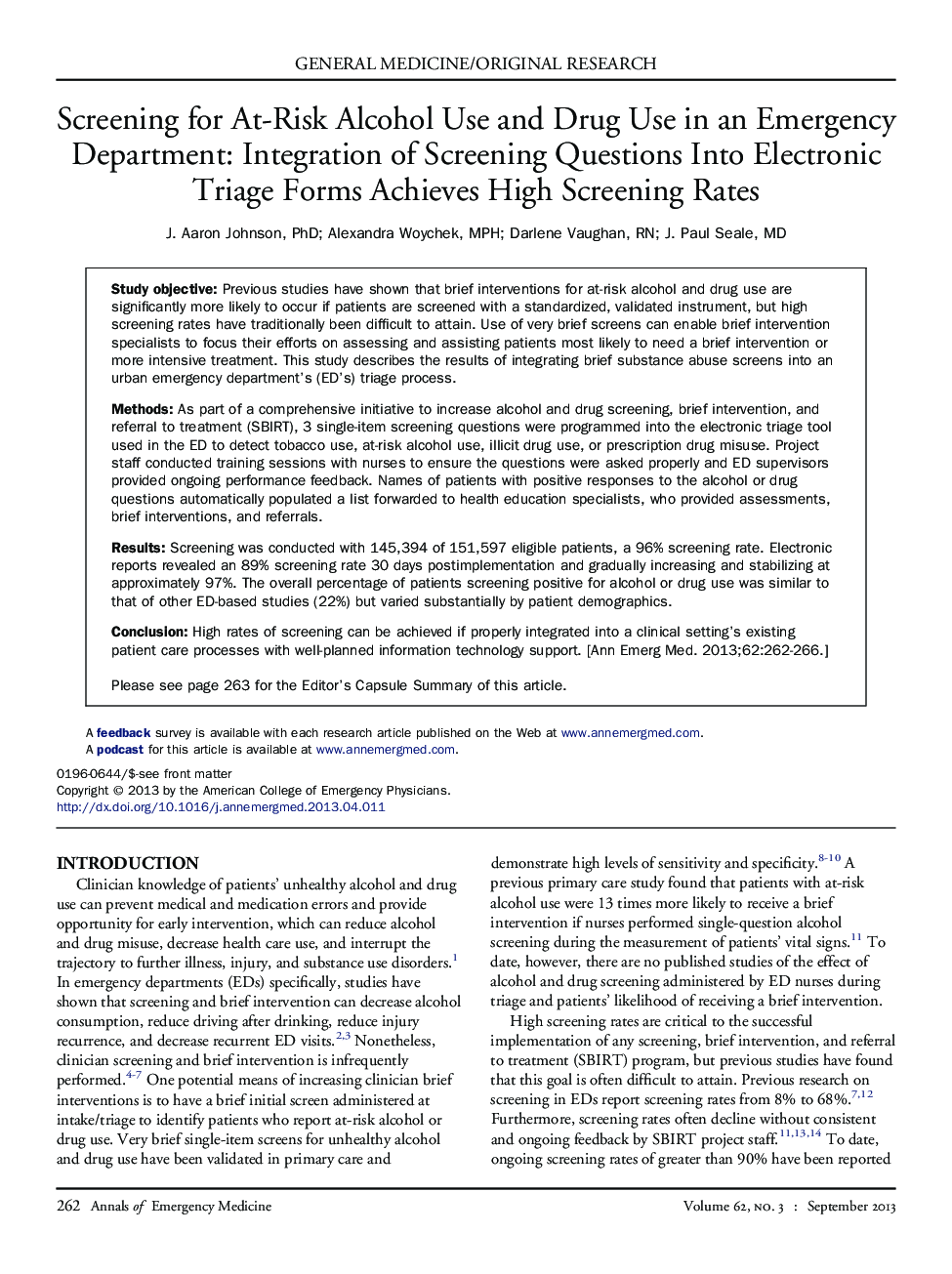| کد مقاله | کد نشریه | سال انتشار | مقاله انگلیسی | نسخه تمام متن |
|---|---|---|---|---|
| 6081169 | 1588542 | 2013 | 5 صفحه PDF | دانلود رایگان |
Study objectivePrevious studies have shown that brief interventions for at-risk alcohol and drug use are significantly more likely to occur if patients are screened with a standardized, validated instrument, but high screening rates have traditionally been difficult to attain. Use of very brief screens can enable brief intervention specialists to focus their efforts on assessing and assisting patients most likely to need a brief intervention or more intensive treatment. This study describes the results of integrating brief substance abuse screens into an urban emergency department's (ED's) triage process.MethodsAs part of a comprehensive initiative to increase alcohol and drug screening, brief intervention, and referral to treatment (SBIRT), 3 single-item screening questions were programmed into the electronic triage tool used in the ED to detect tobacco use, at-risk alcohol use, illicit drug use, or prescription drug misuse. Project staff conducted training sessions with nurses to ensure the questions were asked properly and ED supervisors provided ongoing performance feedback. Names of patients with positive responses to the alcohol or drug questions automatically populated a list forwarded to health education specialists, who provided assessments, brief interventions, and referrals.ResultsScreening was conducted with 145,394 of 151,597 eligible patients, a 96% screening rate. Electronic reports revealed an 89% screening rate 30 days postimplementation and gradually increasing and stabilizing at approximately 97%. The overall percentage of patients screening positive for alcohol or drug use was similar to that of other ED-based studies (22%) but varied substantially by patient demographics.ConclusionHigh rates of screening can be achieved if properly integrated into a clinical setting's existing patient care processes with well-planned information technology support.
Journal: Annals of Emergency Medicine - Volume 62, Issue 3, September 2013, Pages 262-266
